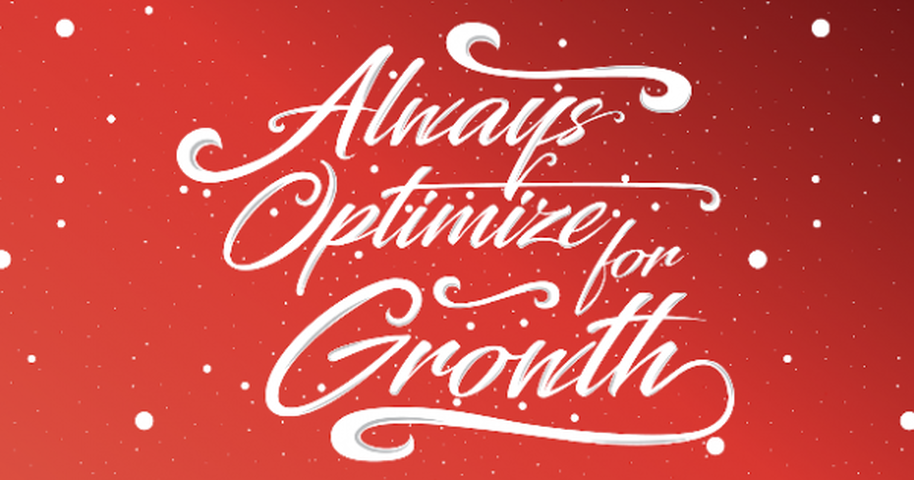In this series brought to you by StackAdapt, a Toronto-based native advertising technology company, you’ll join COO Vitaly Pecherskiy as he meets with top minds in the marketing and advertising industry to uncover how Canadian companies use forward-thinking strategies and cutting-edge software to break through the noise.
In this installment of Canadian Growth Hackers, Vitaly spoke to Michael Irvine, head of marketing at Logojoy, to explore how marketing automation has allowed the company to scale rapidly. In just 1.5 years, Logojoy has had 2.4 million new businesses use their platform to design logos. (Catch Logojoy doing the demo of their platform on June 19 at MarketingTO).
Mike, thanks for speaking to me! Why don’t start off by telling us about what Logojoy does and why it was created?
Vitaly – thank you for speaking with me and featuring us on BetaKit.
Logojoy has a very easy-to-explain business model. It’s an online logo maker that harnesses machine learning and artificial intelligence, empowering entrepreneurs to design and download a logo in minutes.
Logojoy’s origin story is a good one! Like many disruptive companies before it, Logojoy was created to solve a problem experienced by its founder.
Dawson Whitfield is a graphic designer, and he’s created hundreds of logos for clients over the years. But his final logo project was so frustrating that it became the straw that broke the camel’s back. It involved over 75 emails back and forth. Each email seemed to have an ever-more mundane request like “can you increase the font by 2px” or “can we try a slightly lighter blue?”

The logo cost the client thousands, and the result (based on their direction) was just the company’s name on a colored background.
After that experience, Dawson asked: how can I automate design but in an effective and premium way? So he dreamed up an algorithm that would draw from a library of beautiful fonts and symbols, and tapped into graphic design rules.
And thus, Logojoy was born. Logojoy was a way to get a client to a similar result as working with a graphic designer at a fraction of the cost and time invested.
The segment of people who need a logo is huge. Who are your ideal customers?
You’re right – it’s a massive market!
Our ideal customers are entrepreneurs who have recently started a new business or side hustle, based out of the US, UK, or Canada.
They’re eager to bring their business to life with design, and of course, that starts with creating their logo and brand identity. They have a small budget and an even smaller amount of patience. They’re looking for a logo for under $100, and want the final design done in minutes, not weeks.
These customers are restaurant owners, photographers, real estate agents, and every other type of small business owner you can imagine. There are also more niche customers: couples who want a logo for their wedding, office sports teams who need something to put on their shirts, and university students working on school projects.

How did you go about understanding who you should market to?
Understanding who we should market to was easier than you might expect. Shortly after launching our business in November 2016, our SEO acquisition channel started performing very well. We ranked highly for keywords like “logo maker” and “logo generator,” which generated a significant number of purchases for us.
We were then able to use tools like Intercom and Typeform to have meaningful conversations with customers (via surveys and live chat). The insights gained from these platforms allowed us to paint a very clear picture of our target customer.
The most encouraging insight we gleaned from this exercise was that 45 percent of our purchasing customers in Canada are women. Currently, only 36 percent of the country’s small business owners are women, so it’s nice to see this trend moving in the right direction on our platform.
How would you define growth marketing?
In one sentence, growth marketing is just a matter of being your ideal customer’s ride-or-die.
This sounds silly, right? It’s not. Let’s call your ideal customer Mila. To be an effective growth marketer, you have to care so deeply about Mila that you’re willing to do everything it takes to design an 11-star experience for her (in the vernacular of Airbnb’s Brian Chesky).
And yes, part of that is just a matter of smart marketing. Use imagery that resonates with her, use a tone of voice that causes her to take action, send an email at the time of day she’s most likely to read it, know which of your USPs to emphasize above the fold of your landing page, and so on.
But it’s so much more than that. Growth marketing is smart marketing, smart product development, smart customer service and smart operations, all of which tie together to create a flawless user experience.
As a growth marketer, you need to have a strong voice at your organization; you need to influence the major decisions made in every department. Because you are the primary advocate for the customer. You are their ride-or-die.
Your day might look something like this. At 10 a.m., during your product meeting, you suggest cutting out two steps of the checkout process to improve conversion rates. At 2 p.m., during your customer success meeting, you might discuss a strategy to use auto-generated video tutorials in your live chat bubble, because you know this will reduce your customer’s average time to purchase. Then at 4 p.m., you might work with your creative lead to massage the concept of your cinemagraph advert, to ensure the imagery and wording of the ad will increase the likelihood that the highest number of relevant people will sign up for an account with you.
And every decision you influence must have a good answer to all three of these questions: “How does this decision improve Mila’s user experience? Will this new messaging or feature align well with every other touchpoint Mila has? Will this decision make Mila more likely to purchase once, become an advocate and/or become a repeat purchaser?”
Marketing automation is a phrase I hear a lot about when I speak to you. What has triggered the need for automation at Logojoy?
As a growth marketer, once your company has achieved product-market fit and you understand your ideal customer well, you should arguably devote 100 percent of your time to scaling through marketing automation.
Why? Because your resources are limited, and harnessing technology is the only way you’ll have enough firepower to topple the incumbents in your market.
What I love about marketing automation is that simply put, you only have to be right once to be right every time. You have to get your strategy, copy, and imagery right just once, in order for it to resonate with new customers every single day in future.
It’s shocking how many marketers lack empathy for their customers. Don’t be one of these marketers.
Let’s unpack that further. At Logojoy, we spent several weeks working on an email onboarding campaign. Admittedly, this was a painful process for all involved. We needed to get deep into the mind of our ideal customer, to the point where we knew their pain points, objections, and drop-off points as if they were our own. It required lots of back-and-forth on the copy, lots of email template development, lots of illustrations creation, and plenty of subject line testing.
But once it was done, it was done. And now, every day, close to 10,000 people enter into our onboarding campaign and have the same magical experience. The best part? We’ve been able to prove a 3x increase in conversion rate as a result of this automation.
Marketing automation goes way beyond email marketing and is relevant to SEO, paid acquisition, chatbots, data analytics, and so much more.
At this rate, do you think you could, in theory, automate yourself out of the job?
Fortunately for my chequing account, I don’t think I could automate myself out of this job!
Logojoy’s product will continue to evolve for years to come, and this evolution will require overhauling our branding, messaging, target customer base, and preferred marketing channels.
We’re aiming to become THE design platform for entrepreneurs – which will one day include their logo, brand guidelines, website, ads, packaging, merchandise, and beyond. I relish this challenge.
But could we automate the growth of Logojoy within the logo-making industry? For sure. With the groundwork laid, all you’d need to do is increase the paid acquisition budget and continually produce great content for SEO, using freelancers.
Walk us through some of the marketing automation systems you have implemented. Our readers love tactical know-how.
Sure thing! So I’ll break up our automation into acquisition and engagement buckets. The acquisition systems help us attract customers to our platform and get them to sign up, while the engagement ones help us push customers further down the funnel towards purchase.
Acquisition
As a manager, being right doesn’t matter. What matters is getting done what you need done.
In other words, get rid of your ego. Be humble. Let others think they came up with the idea first.
1. Google Adwords Search: No surprises here! We rely on Google Adwords Search for about 40 percent of our website traffic. This seems like a lot, and it is. But when you have a very niche audience (in our case, new entrepreneurs who create a logo during a four-week window), then SEM needs to be your top priority.
We continue to scale search by testing new geographies and by expanding the pool of keywords that trigger our ads. My top tip? A/B test the heck out of your creative! We’re getting a CTR which is about 2x higher than expected for our average position, and this is what’s allowed us to scale so rapidly.
2. SEO: we use ahrefs for content ideas and Google’s Keyword Planner for keyword research. Lots of work needs to be put into identifying the right keywords, by looking at search volume, relevance, commercial intent, and competition.
Once armed with the right search terms, it’s a matter of creating beautiful landing pages that help prospects achieve the desired aim implied by their search term. We did this at scale recently with our logo ideas project.
3. Content marketing: we identify medium and long-tail keywords related to logo design and then use freelancers and in-house content creators to produce high-quality pieces consistently. This isn’t marketing automation in the true sense of the term, but it’s about as automated as content marketing can be. We then use StackAdapt, newsletters, and social to promote this content and increase our reach.
4. Facebook and Instagram Ads: the trick here is to know your audience well and keep the targeting simple. Many marketers add multiple filters to their audience (e.g. age, gender, location, job title, interests, companies followed), and while this sounds like a good plan in theory, the more filters you add, the higher the CPM you’ll be paying.
A good way around this is to upload a list of existing high-LTV customers and create a lookalike audience. Creatively, keep your copy super short, only pitch one benefit, and use stunning (ideally light-colored) imagery.
5. Affiliate Marketing: we use Growsumo, which is the truest form of marketing automation. You outsource the creation of messaging and imagery to those who make a living marketing other companies to their audience.
Lots of work needs to be put into onboarding the right affiliates, but afterward, you sit back and watch as revenue consistently rolls in. And despite giving affiliates a large piece of your pie, it’s often still cheaper than acquiring customers through Google or Facebook. The downside? It’s harder to control your brand’s messaging.
Engagement
1. Intercom onboarding: as mentioned, our onboarding campaign is a series of educational, motivational, and benefit-driven emails that led to a 3x increase in our conversion rate.
What’s the secret sauce here? Identify all of your customer’s pain points and objections to buying your product, and create an email addressing each pain point and objection. Be lighthearted and engaging in your emails; you want to humanize your brand!
Every time you write any piece of creative, ask yourself, “Why would my ideal customer care about this messaging?”
2. Facebook and Google display retargeting: Never underestimate the power of spending your marketing dollars on re-engaging existing users. Bear in mind that the cost of acquiring new customers is between five to 25x more expensive than retaining existing ones. Remember to change the messaging of these ads compared to your acquisition ones; educate less and motivate more.
3. FullStory: this is an awesome tool that allows you to record how individual customers navigate your website. You can pinpoint a specific customer and watch a video of their last session (it helps to fast forward)! But the more useful thing to do is to look at your stats and heat maps in aggregate.
Why is FullStory useful? It means you can change your UI/UX or product after some quick analysis. It’s a data-driven approach to design that few companies employ, and wow does it lead to improved results!
4. Survicate: this super-simple survey tool allows you to gather customer feedback and adjust your customer service approach in real time.
For us, if a customer tells us our product is too expensive, we offer a discount. If they’re having trouble tweaking their logo design, we provide 1:1 support. And if they’re not ready to start their business yet, we send them articles containing tips on how to start a business (e.g. how to choose a business name).
Bonus, quick questions!
What unexpected discovery have you stumbled upon this year?
As a manager, being right doesn’t matter. What matters is getting done what you need done.
In other words, get rid of your ego. Be humble. Let others think they came up with the idea first. Lavish your colleagues with praise. Publicly admit you’re wrong when you were wrong.
You need to do these things because they allow you to get more out of your team and other teams, helping you deliver what is right for the customer in the fastest possible way.
What do you wish you could do better as a team?
Focus more on our company’s branding. It’s hard to devote time to a project that has an uncertain ROI when you’re under 1.5 years old and need to show investors that you have the potential to become a unicorn one day.
But we’re in a good place now, so we’ll be putting more emphasis on branding in the coming months. Watch this space!
What one piece of advice would you give to other marketers?
It’s shocking how many marketers lack empathy for their customers. Don’t be one of these marketers.
Every time you write any piece of creative, ask yourself, “Why would my ideal customer care about this messaging?”
Does it communicate the benefits of our product (save time, save money, look or feel better)? Does it educate them? Does it invoke a powerful emotion? Does it help them fulfill their personal goals (e.g. career growth)?
If the answer to all of these questions is no, you need to re-evaluate your messaging.



